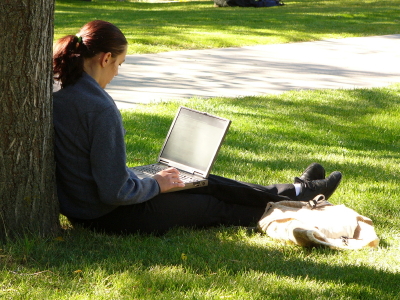During spring cleaning we open up the windows, get rid of the junk we no longer need (or never needed in the first place) and give our carpets a much needed deep clean. When we are done we feel energized, organized, and focused—ready to take on the world again. What if we could apply this principle to our lives? Hear me out ….a big area of discussion these days is how to achieve a work-life balance. Sort of like spring cleaning for your life, getting better at organizing your time and taking more time for things that are important to you and rejuvenate your spirit instead of just your home. Something tells me we would all be happily surprised with the results. Guess what, The Executive Office of the President, Council of Economic Advisers, agrees.
Continue reading “Spring Cleaning Our Lives”Wellness and Nutrition
How “Happy” Wins
 “The science of happiness” is a catchy and promising title that was recently used for a series of articles on Newscientist.com.
“The science of happiness” is a catchy and promising title that was recently used for a series of articles on Newscientist.com.
So I took a look at some research and found an intriguing report highlighted in a Wall Street Journal article “Is Happiness Overrated”. This article was about research done at the University of Wisconsin by Carol Ryff and Jennifer Morozink, et al. (1) .
It turns out that happiness is not only sometimes hard to find (personal communication), it can also be difficult to define. I learned that there is: 1) more than one kind of happiness and; 2) all happiness is not created equal.
DIY: Build a Baby Who Loves Broccoli
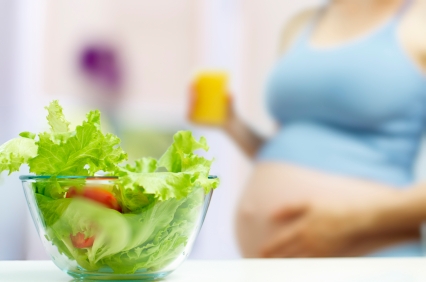 I’m about six months pregnant with my husband’s and my first child, a wee thing of unknown gender and much kicking that we’ve taken to affectionately calling “The Colonel.” Amid all the voracious reading that modern moms like me seem compelled to do, I was intrigued to see the results of a study from the University of Colorado School of Medicine indicating what I eat during these nine months of magical gestation may directly affect The Colonel’s openness to eating various foods. As I sit down to dinner every night, am I setting myself up for a picky eater, or will my kid be just as happy to try Brussels sprouts as pancakes (shaped like Mickey Mouse, per my husband’s big plans)? This research may have the answer. Continue reading “DIY: Build a Baby Who Loves Broccoli”
I’m about six months pregnant with my husband’s and my first child, a wee thing of unknown gender and much kicking that we’ve taken to affectionately calling “The Colonel.” Amid all the voracious reading that modern moms like me seem compelled to do, I was intrigued to see the results of a study from the University of Colorado School of Medicine indicating what I eat during these nine months of magical gestation may directly affect The Colonel’s openness to eating various foods. As I sit down to dinner every night, am I setting myself up for a picky eater, or will my kid be just as happy to try Brussels sprouts as pancakes (shaped like Mickey Mouse, per my husband’s big plans)? This research may have the answer. Continue reading “DIY: Build a Baby Who Loves Broccoli”
When Being Dense is Good: Mindfulness, Meditation and Increasing Gray Matter
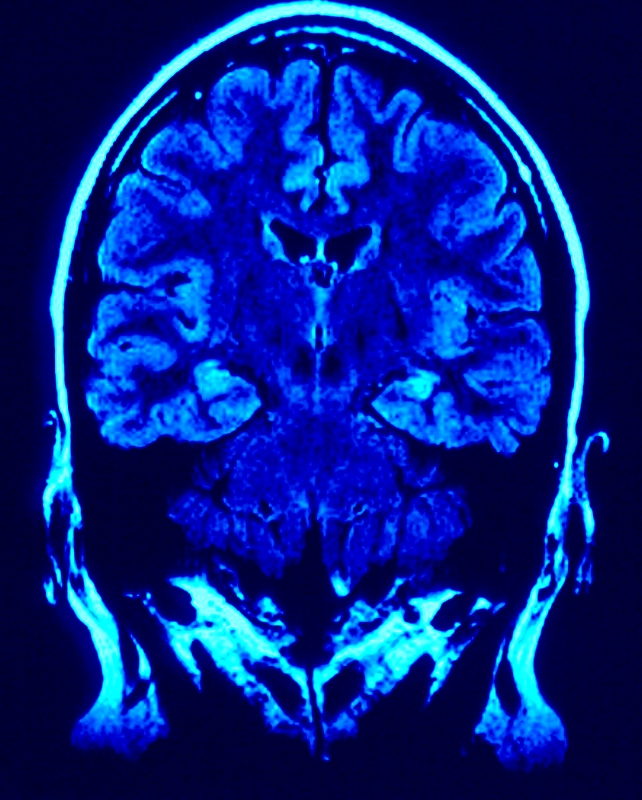 When my my Mother’s sister, Pat, was seven years old, she was in a car-bicycle accident that resulted in some very serious brain trauma. She spent better than a year learning to walk and talk again, and although there were some lasting personality changes, she went on to earn a nursing degree and live an independent life. When I think of My Aunt Pat, I can’t help but marvel at what the human brain can do. Damaged brain tissue does not re-grow, but still the brain can find a way to rewire itself to circumvent damaged areas.
When my my Mother’s sister, Pat, was seven years old, she was in a car-bicycle accident that resulted in some very serious brain trauma. She spent better than a year learning to walk and talk again, and although there were some lasting personality changes, she went on to earn a nursing degree and live an independent life. When I think of My Aunt Pat, I can’t help but marvel at what the human brain can do. Damaged brain tissue does not re-grow, but still the brain can find a way to rewire itself to circumvent damaged areas.
Fortunately, it doesn’t take trauma to the brain for it to demonstrate its plasticity. Our neural structures can be modified with the right training. Studies have shown task-specific increases in gray matter as a result of things such as learning an abstract skill or increasing aerobic activity. Cross-sectional studies have established that differences in performance abilities are associated with differences in regional gray matter. To me this begs the question: Can we consciously increase gray matter in specific regions of the brain? Continue reading “When Being Dense is Good: Mindfulness, Meditation and Increasing Gray Matter”
Just a Spoonful of Honey is Medicine Enough
As we face more challenges when treating and healing humans, revisiting therapies that fell out of favor has become more common. For example, people with open wounds that are not healing receive judicious applications of maggots to remove necrotic tissue and promote healing. Leeches are used for patients after surgery to prevent blood clotting in swollen tissues and encourage healing. However, not all therapies involve direct application of squirmy creatures to skin; in fact, honey is one item people are willing to have in their homes. Honey has been used as a sweetener for food, for soothing sore throats and coughs and, more recently, for treating wounds unresponsive to traditional antibiotic therapy. In a recent PLoS ONE paper, the authors assessed the properties that are associated with honey’s antimicrobial activity against pathogenic and food-spoiling bacteria. Continue reading “Just a Spoonful of Honey is Medicine Enough”
Stand Up and Walk; Repeat Often
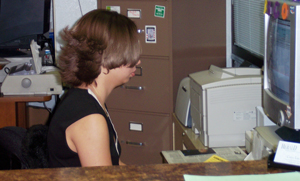 As someone who regularly works at a computer both at work and at home, sedentary activity is a part of my daily life. Unfortunately, my desk is the standard kind that requires me to sit on a chair; I can only dream of the kind that has a treadmill to walk and encourage movement as I work. The health consequences of sitting for long periods of time have been covered in research papers and other blogs, but a recent paper highlighted how sitting for extended periods of time can have major health consequences. Continue reading “Stand Up and Walk; Repeat Often”
As someone who regularly works at a computer both at work and at home, sedentary activity is a part of my daily life. Unfortunately, my desk is the standard kind that requires me to sit on a chair; I can only dream of the kind that has a treadmill to walk and encourage movement as I work. The health consequences of sitting for long periods of time have been covered in research papers and other blogs, but a recent paper highlighted how sitting for extended periods of time can have major health consequences. Continue reading “Stand Up and Walk; Repeat Often”
A Good Cup of Tea
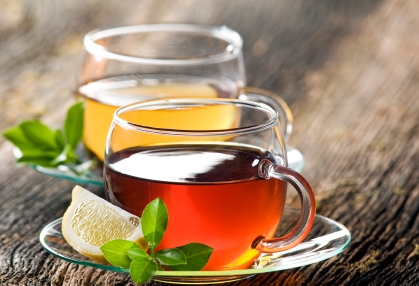
If man has no tea in him, he is incapable of understanding truth and beauty. ~Japanese Proverb
There is nothing like a good cup of tea. On that there is little dispute. Growing up in Britain, I was introduced to tea at an early age. It was impossible to avoid it. We had tea after every meal, twice in between meals (elevenses and afternoon tea), and additional cups whenever anyone came for a visit. The news that tea might actually be good for you came as a welcome relief to those of us who grew up steeped in the stuff. At last—something enjoyable that wasn’t bad for you.
What Makes a Good Cup of Tea?
From George Orwell to Wikihow, many have weighed in over the years with an opinion on how to make the best cup of tea—pronouncing on such details as loose leaves vs teabags, why it is uncouth to drink from the saucer, and why you should never put the milk in first. The details of what makes a good cup of tea are hotly debated and ultimately a matter of personal preference. Properly boiled water and good quality tea are vital, warming the teapot is helpful, and allowing the tea to properly infuse makes a big difference to the final outcome (no cutting corners by squashing a teabag against the side of the cup). But what makes a cup of tea good for you may be harder to figure out.
Vitamin D and Asthma
We all like sunshine, right? In fact this time of year, some people pay a pack of moola and travel great distances in search of stronger solar.
Research reports continue to tout the benefits of vitamin D (1). In several studies from 2009, researchers found that patients with low blood levels of vitamin D had worse asthma symptoms than patients with higher serum vitamin D levels. In addition, patients with low vitamin D levels didn’t respond as well to asthma therapies as the patients with higher vitamin D levels.
A study done at National Jewish Health Center in Denver, Colorado, found that that low vitamin D levels influence a number of aspects of asthma, including lung function, bronchospasm and response to steroids. Results of this study are soon to be published in the American Journal of Respiratory and Critical Care Medicine (2). Continue reading “Vitamin D and Asthma”
